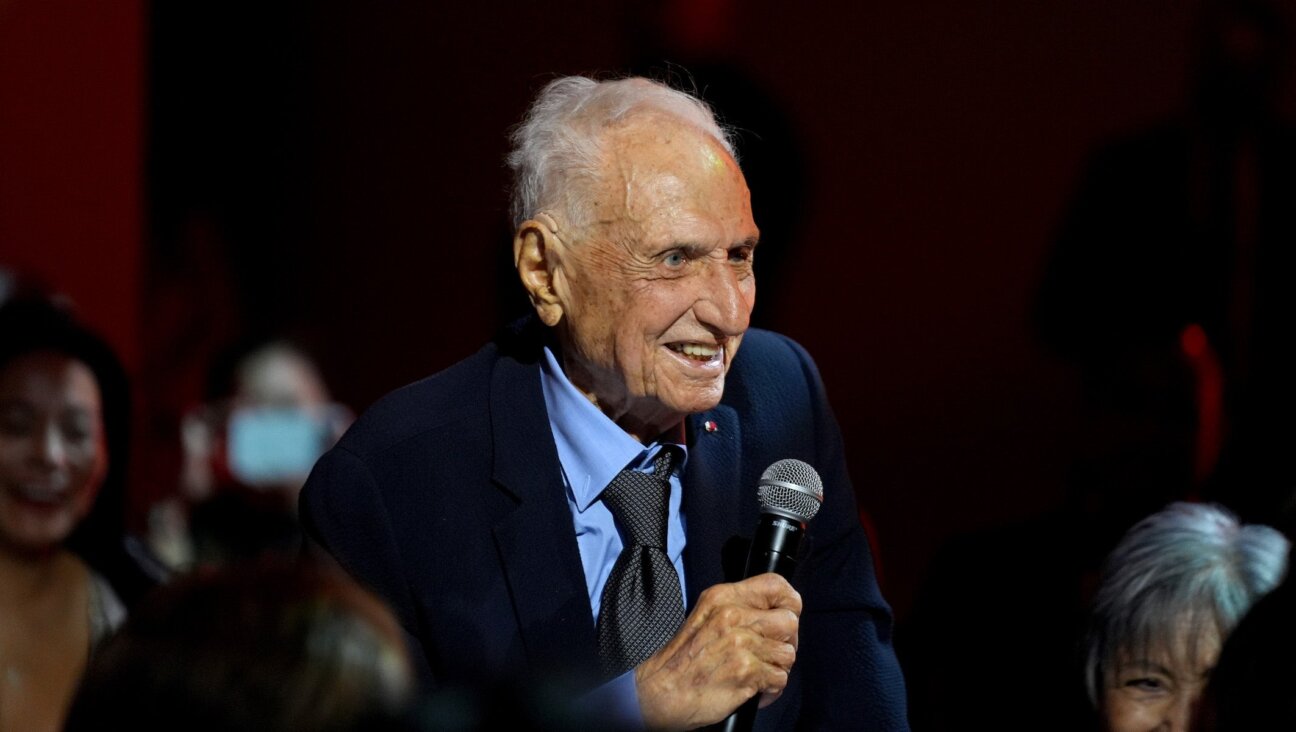The Twisty History of Jewish Kid Lit

A New Chapter: The ?problem novel? represents the largest shift in chil- dren?s books in a half century and opened the door to forbidden subjects, such as abuse. Image by Forward Association
Bullying, suicide, abuse. In recent years, the genre of Jewish teenage literature has tackled subjects once considered so taboo, not even the most progressive authors would touch them. These “problem novels,” as they are called — exemplified recently by books like “Gravity,” by Leanne Lieberman, in which a teenage girl from an Orthodox family realizes she is a lesbian, and “Hush,” which, written under the pseudonym Eishes Chayil, takes on the problem of sexual abuse and suicide in a religious community — have been published since the early 1970s and have shattered the classic idea of Jewish children’s literature, which presented an idealized American Jewish family.
The 1935 release of Saide Rose Weilerstein’s “The Adventures of K’Ton Ton,” which features an adventurous thumbnail-sized Jewish boy, was also revolutionary for its time, though not shocking. Changing the idea of Jewish children’s literature, it was the first book written with the modern American child in mind, according to children’s librarian Linda Silver, author of the Jewish Publication Society’s recently released guide, “Best Jewish Books for Children and Teens.” The reference book organizes and summarizes Jewish books for children and teenagers from the turn of the century until now.
The problem novel, which addressed teens as their own reading group for the first time, and the invention of the “modern” Jewish children’s book represent two of the major leaps in the genre’s development since the late 1800s. But several smaller steps have also paved the way for today’s Jewish children’s books. Silver, in several interviews with the Forward, explained the progression through a number of seminal books that opened the door for others.
At the end of the 19th century, when the United States was experiencing a previously unseen influx of Jewish immigrants, the first English-language Jewish children’s books were being published. But the books, largely watered-down religious textbooks, were suited more for adults than for kids. The 1888 creation of the JPS, which came with a children’s division, changed that, though at first only slightly. “The members of their editorial board realized that American Jewish children had different needs than their forebears, including English as their primary language. So, it found authors who could write in English to write on biblical subjects or role models,” Silver said.
The first major change in Jewish children’s books came between the World Wars, as immigrants raised American-born children and Jews started to acculturate. During the same era, “a greater emphasis on children’s own needs, own developmental cycle” was popularized in American culture and thinking, Silver explained. Now, books both entertained and educated young readers about Jewish customs, holidays and traditions.
The publication of “The Adventures of K’Ton Ton,” the first book expressly created for American Jewish children, broke with the ranks.
The modern Jewish children’s book had been born, though its only readers were Jewish. The 1951 publication of “All-of-a-Kind Family” by Sydney Taylor, the first of a series of chapter books about five Jewish sisters growing up on New York City’s Lower East Side, shifted the audience. It gave young American-born readers an insider’s perspective into the life of an immigrant child. It was the first “cross-over book” that, Silver said, appealed broadly to both Jews and non-Jews. “For the first time, gentile kids could meet a Jewish family.”
At the same time, teenagers were befriending a girl named Anne Frank through pages. Although the 1952 publication of “Anne Frank: The Diary of a Young Girl” in English was originally intended for adult readers, it was quickly adopted by teenagers and had the effect in the publishing industry of creating a focus on tolerance and understanding, which according to Silver had previously been largely ignored.
While “Anne Frank” unintentionally helped usher in the era of literature for teenagers, the genre was taken a step further with the 1970 publication of “Are You There God? It’s Me, Margaret” by Judy Blume, which simultaneously created what Silver refers to as the “problem novel.” For the first time, according to Silver, a widely popular book touched on the changing face of the Jewish family. The main character, coming from a half-Jewish family, questions her religious identity throughout the book. “Are You There God?” also discussed in detail the physical changes brought on in female adolescence, which she said “opened the door to forbidden subjects in children’s literature,” such as abuse and prejudice.
While the problem novel represents the largest shift in the field in the past 50 years, other smaller strides were taken. In what Silver calls an outgrowth of the 1960s and ’70s trend of “people going back to their roots,” Jewish writers began rewriting English accounts of Eastern European Yiddish folktales, like the stories of the fools of Chelm and Hershel of Ostropol.
Artists and illustrators, during that time, turned their attention toward the genre.
Isaac Bashevis Singer’s “Zlateh the Goat and Other Stories,” first published in 1976, was illustrated by Maurice Sendak. During the same period, Silver also noted, came a rise Sephardic stories, “but I will not go so far as to call it a trend,” she said.
Silver, whose guide includes a nine-page selection of recommended Hanukkah books, points out that Jewish children’s books “almost always reflect the society in which they’re published.” By reading and rereading archives or family libraries of books that our parents and even our grandparents grew up with, one can trace the American Jewish story.
Devra Ferst is the editor of the Forward and Hazon food blog The Jew and the Carrot.
















